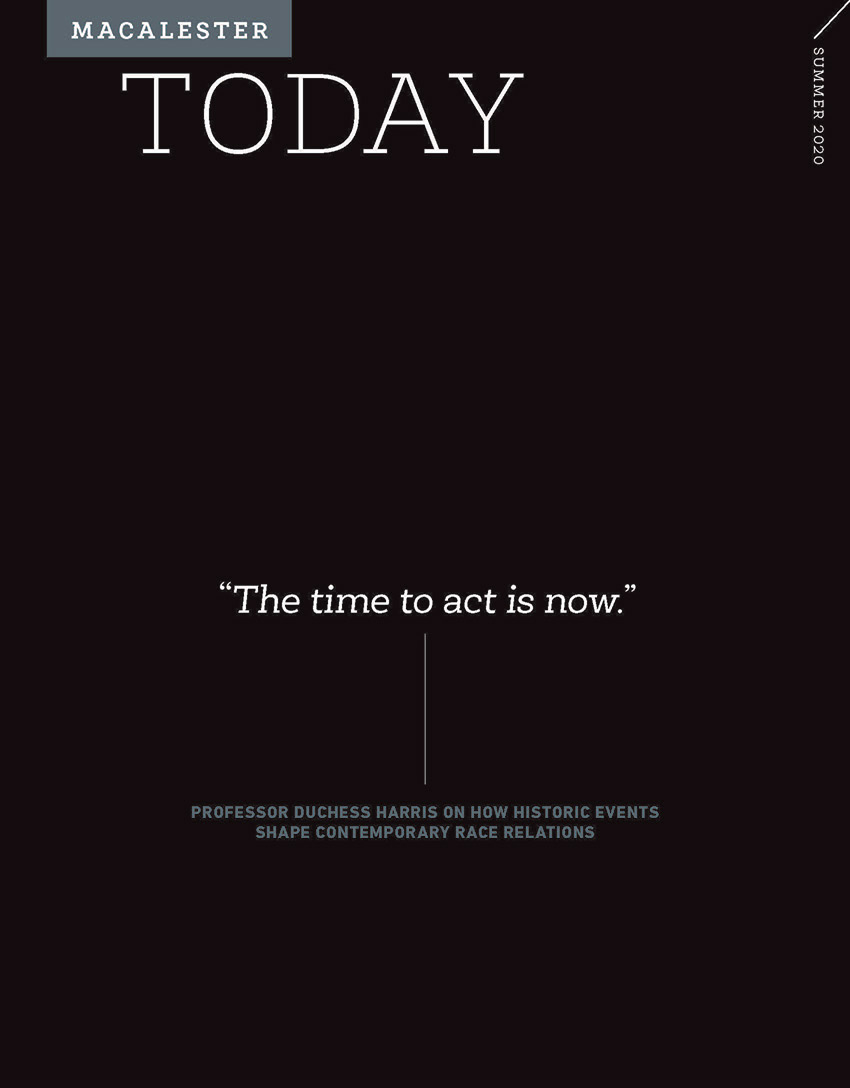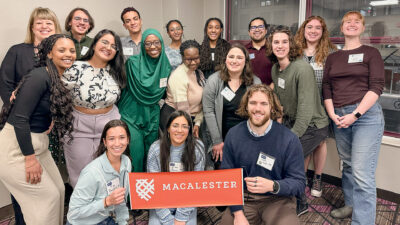
In the past decade, how we understand the gut microbiome—the microorganisms living in your intestinal tract—has changed dramatically. And along the way, so has biology professor Robin Shields-Cutler’s approach. “I went from working with petri dishes and flasks to sitting at a computer for 95 percent of my research,” says Shields-Cutler, whose current projects include gut microbiome studies in collaboration with the Como Zoo, University of Nebraska Food for Health Center, and the University of Minnesota Medical School. Here’s what he and other researchers are learning about what’s happening in your gut.
What happens in a microbiome?
Think of your intestines as an outrageously diverse ecosystem, much like a jungle. Species support and conflict with each other, and there can be dynamic changes in response to the environment. The bacteria bring their own genes and amplify our body’s activity hundreds of times over what we can do by ourselves. It begs the question: are we human, or are we just a raft for these microbial friends?
What do they do?
These organisms aren’t passive residents that trickle into our bodies and hang around—they play essential roles. They help develop our immune system, teaching our body what’s a friend or foe. They synthesize essential nutrients that we can’t make ourselves: newborn babies get a vitamin K shot to help prevent bleeding, for example, because they don’t yet have the gut bacteria that make some of our vitamin K.
They also help digest our food. Without gut bacteria, you wouldn’t be able to get the necessary nutrients from food—you’d have to eat probably around 30 percent more calories to get the same energy. And there’s a lot of evidence building about crosstalk between the gut and the brain and how microbial metabolites can regulate brain health and function.
The trick is, we carry probably a thousand different bacterial species, and the community looks different for everyone. If we were to compare the diversity and types of species in my gut to someone else’s, it could be as different as comparing a prairie to a forest.
Why does that composition vary?
Research suggests that this gut community can change in response to our environment—the microbiome’s “meta-genome” is more adaptable than our body’s genome. When you compare microbiome samples from wild primates to primates in zoos, their composition is very different. At the Como Zoo, I’m studying two tamarin monkeys to learn more about how the microbiome responds to changes. We have over a hundred samples along the timeline of when they met each other, when they changed their diet, if and when they went on antibiotics. Over time, we’ll look at what stressors and exposures do to the gut.
What threatens gut health?
An antibiotic bombs your intestines with something that’s designed to kill a pathogen. But along the way through that jungle, there’s a lot of collateral damage, too. When the smoke clears, the jungle starts to grow back. Sometimes the species recover just fine—that’s probably the typical experience.
But sometimes they don’t grow back in the same way. You can see dominance in particular organisms, or new organisms that shouldn’t be there. You can end up with the equivalent of a monoculture.
What are the implications of those imbalances?
Recent literature has associated microbiome shifts with obesity, diabetes, cancers, irritable bowel syndrome, and Clostridium difficile infection. There’s a very effective treatment for Clostridium difficile now that involves taking a healthy microbiome and just giving it to a person who’s suffering from this infection. It’s a miracle for a lot of patients.
Right now, my lab is working with University of Minnesota clinicians to understand how disturbances in the gut community may affect patient outcomes after bone marrow transplants. There’s a ton of data, but we have a great collaborative team piecing together the puzzle.
How do we keep our microbiome healthy?
That’s tricky, because we’re still answering a lot of basic questions, and there’s a lot of variability: what works for me very well may not work for you.
Avoiding major damage to the microbiome is good, but antibiotics and other drugs can be life-saving, when prescribed and taken correctly. Something people have a little more control over is their diet. Based on existing data, the most defensible recommendations support eating a diverse diet rich in natural plant fibers. These fibers aren’t really for us—they’re food for the good bacteria in our guts, and can help nurture a diverse jungle. Greater biodiversity appears to be beneficial and may be protective against some diseases.
How do you study these organisms?
When people think about microbiology, they probably envision microscopes and petri dishes. But it just doesn’t work to take the majority of these organisms out of context. If we can’t grow a microbial sample in the lab, we can take the DNA and figure out the sequence that is unique to each species. That’s essentially what we do: next-generation DNA sequencing. And almost everything we know is from the last 10 to 15 years.
What accelerated this recent progress?
In the past decade, next-generation DNA sequencing’s cost has plummeted. In the 1990s, the first Human Genome Project cost three billion dollars over roughly 13 years. Now, for a few thousand dollars, you can use what looks like a very elaborate copy machine and see the equivalent of 800 human genomes in under two days. This technology lets us look into these microbial communities to figure out the DNA sequences, then use that information to learn what’s present and what they’re doing.
There’s an avalanche of data pouring out, and we’re just trying to keep up. Often we don’t have the tools to analyze the data or even ask the right questions. We’re designing new studies based on what we’ve learned, which helps us figure out what we might investigate next. It’s an exciting time to be a microbiologist—we are constantly reminded how little we know about the microbes that we rely on for life. We’re developing a clearer picture that I think will transform many aspects of medicine and nutrition.
By Rebecca DeJarlais Ortiz ’06 / Illustration by Eva Tatcheva
August 18 2020
Back to top





